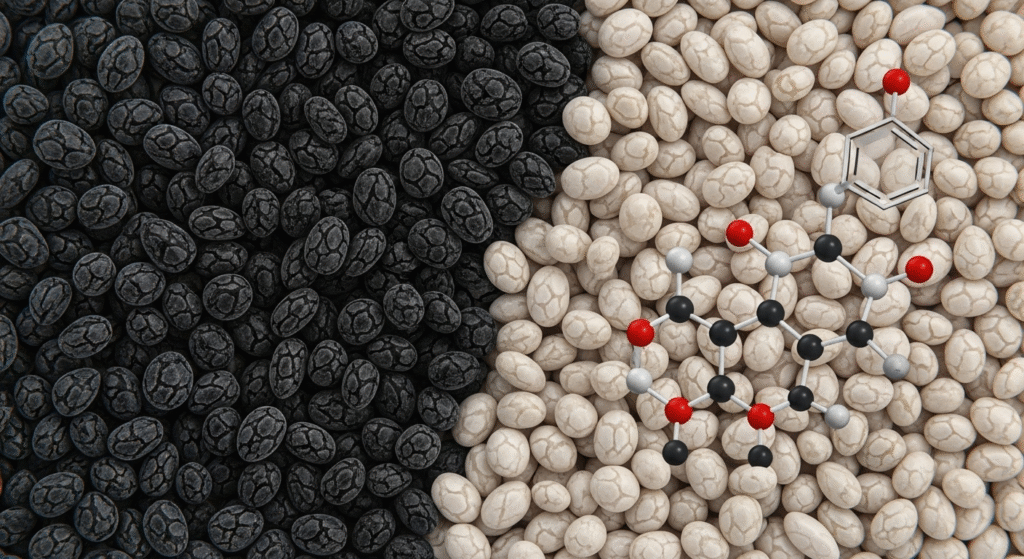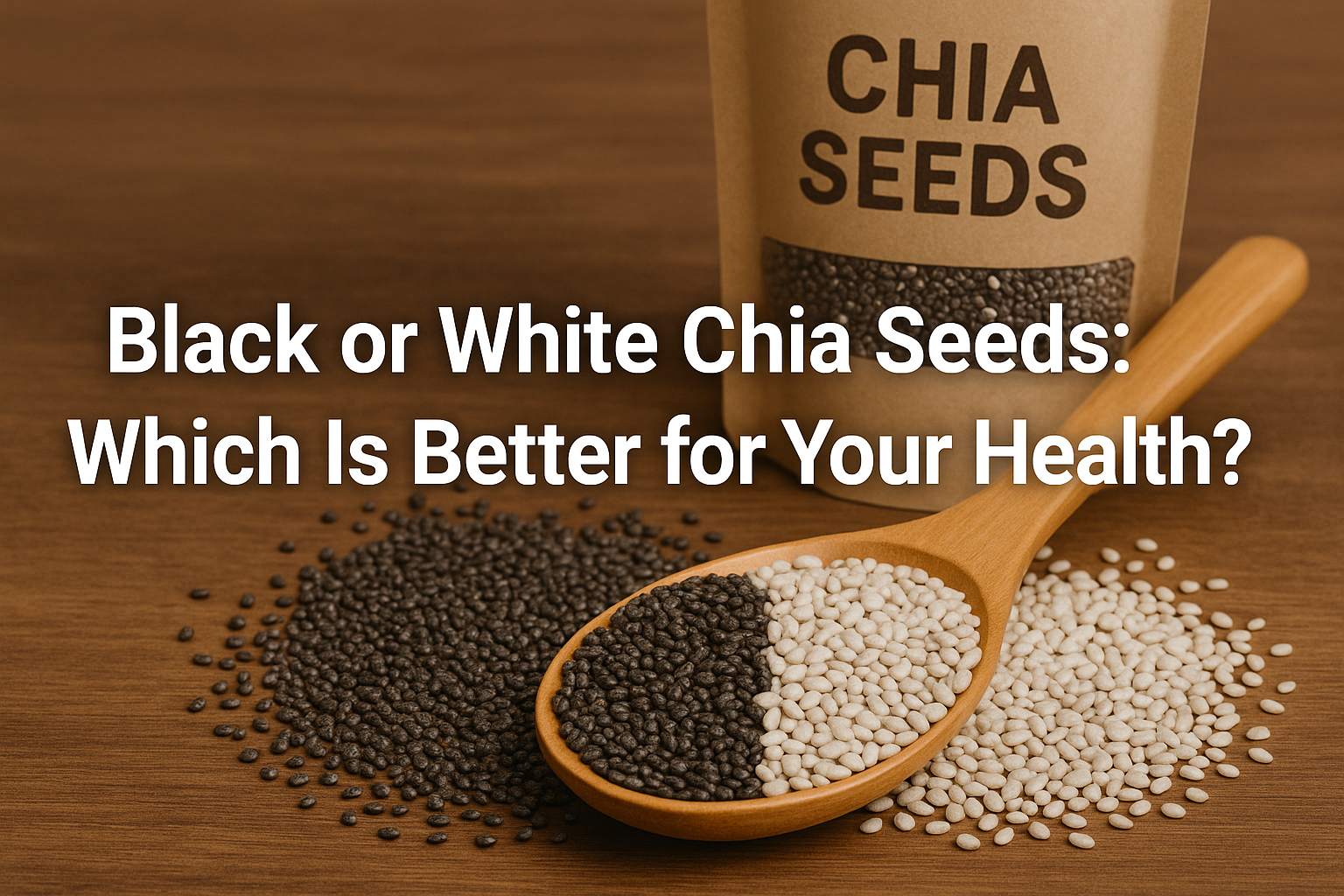Chia seeds have earned a spot in the arena of superfoods, boasting remarkable levels of nutrition and being greatly versatile in the kitchen. But ever since they became more popular, so has the controversy: black or white chia seeds — which one is better? If you’re on a health kick and looking to make the most informed choice, this ultimate guide will help you understand the differences, similarities and best uses for both varieties.
Understanding Chia Seeds: A Nutritional Powerhouse
Tiny but mighty Chia seeds, from the plant Salvia hispanica, have been heralded as a superfood for centuries. They’re naturally gluten-free and packed with omega-3 fatty acids, fiber, protein, antioxidants and essential minerals such as calcium, magnesium and phosphorus. This naturally makes it a popular choice for health lovers, vegans and those looking to add a little more nutrition to their daily meal.
The Science Behind Chia Seed Colors
Most people first ask if there is a health difference between black chia seeds vs white chia seeds. The answer is nuanced.
Nutritional Profile Comparison
Black and white chia seeds are derived from the same plant species but have nearly identical nutrition. Here’s a breakdown:
- Omega-3 Fatty Acids:Both are good sources of alpha-linolenic acid (ALA), plant-based omega-3 fatty acids.
- Fiber Content: Each variety provides ~10 grams of fiber per ounce for gut support and fullness.
- Protein: Both contain 4-5g protein per ounce so they’re a wonderful plant-based protein source too.
- Minerals: They’re the same in calcium, and magnesium and phosphorus are pretty much the same too—which is good for bones and metabolism.

Color and Antioxidant Content
The main distinction between black and white chia seeds is the color as a result of some variance in plant genetics. A few studies imply that black chia seeds may have slightly more antioxidants as indicated by the darker color, but it’s negligible and not enough to influence general health.
Taste and Texture
Both white and black chia seeds have a neutral, nutty taste and take on the flavor of whatever they are soaked in. They become thick and gel-like when in contact with a liquid, so they are perfect for puddings, smoothies and baking.
For more blogs and insights on the digital world, visit Technologiia.com.
Health Benefits of Chia Seeds
Are Black or White Chia Seeds Better for Weight Loss and Heart Health?
Chia seeds, regardless of color, offer a range of health benefits that align with common wellness goals.
Weight Management
The amount of fiber that chia seeds have makes them very filling so they can help with weight control. Black and white chia Both black and white chia seeds can absorb water and expand inside the stomach allowing for the stomach to feel fuller so appetite Is suppressed as well as the urge to eat more food is reduced, thus the whole caloric intake is limited.
Heart Health
Omega-3’s contained in chia promote healthy cardiovascular function by helping to lower inflammation, blood pressure, and cholesterol! They’re both equally effective for that.
Blood Sugar Regulation
Chia seeds can help stabilize blood sugar levels due to their fiber content, which slows the absorption of carbohydrates. This makes them a smart choice for individuals managing diabetes or insulin resistance.
Practical Uses and Culinary Applications
How to Use Black or White Chia Seeds in Your Diet
Black and white chia seeds are so versatile and can often be used interchangeably in recipes. Here are a few favorite ways to eat them:
Chia Pudding
Combine chia seeds with plant-based milk and a bit of natural sweetener to create a simple, pudding-like breakfast or snack.
Smoothies
Put 1 tablespoon of chia seeds in your go-to smoothie for added fiber and omega-3s.
Baking
Chia seeds can be used as an egg replacement in vegan baking, and sprinkled on top of bread, muffins, and granola for a little extra crunch.
Salads and Yogurt
Add a sprinkle of chia seeds to a salad or breakfast yogurt bowl for some nuttiness and added nutrition.
Choosing the Right Chia Seeds for You
Should You Choose Black or White Chia Seeds?
As far as whether you should buy black or white chia seeds, it usually just depends on your preference and the look of the kinds of things you’re adding them to (the nutrition in them is basically the same).
- Visual Appeal: When it comes to that classic chia look, some may like the look of white chia seeds in lighter colored dishes because they wouldn’t have that contrasting black clump against the dish black chia seeds do.
- Availability: Black chia seeds are widely available in stores, and white seeds may be marginally more expensive due to their relative scarcity.
- Nutritional Value: The variance is so small that you may as well choose between the two on other grounds – taste, looks, or price.
Conclusion
There’s no clear health winner in the black or white chia seed debate. Both are equally nutritionally beneficial and can be freely substituted in your diet. It’s ultimately up to you which style you prefer, what looks nice with the recipe, and what you have in the pantry. Choose black or white chia seeds, and you’ll be setting yourself up for a healthier lifestyle and achieving your wellness aspirations.
FAQs
Are black chia seeds healthier than white chia seeds?
No, black and white chia seeds are virtually the same nutritionally. The variations in antioxidants are small and have a negligible effect on health.
Can I use black and white chia seeds together?
Absolutely! Combining these 2 types can add visual appeal to your food without changing taste or nutrition.
Do black or white chia seeds taste different?
No, they both have gently nutty, similarly textured flavours when soaked.
Are there any side effects of eating chia seeds?
In most cases, chia seeds are safe, but eating them dry may cause a dangerous obstruction of the esophagus. Soak them or drink lots of water.”
Which chia seeds are better for baking?
They both work perfectly for baking. You can make your selection based on the color you would like for your finished product.



